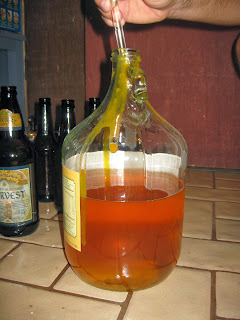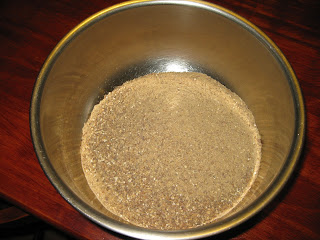
One of the very first books I read about brewing was the third edition of Charlie Papazian's
The Complete Joy of Homebrewing. It's a great book, commonly considered the homebrewer's bible--if a homebrewer has only read one book about brewing, chances are the book they've read is Charlie's. Recently I've been working my way through another book written by Papazian:
Microbrewed Adventures. I've been enjoying it, and wanted to mention a few of the thoughts it brought up.
First of all, I should probably mention that the book feels a bit pieced-together. I'm guessing the text consists largely of reprinted articles he'd originally published in Zymurgy magazine. The pieces are mostly thematically linked, either by travel or by relevance to the American craft beer scene, but the order they're arranged in is dictated by region and subject, not by time. That means you've got stuff Charlie wrote back in the nineties spliced in with stuff written in the 80s and even stuff from the last ten years. On the one hand, this results in a sort of jumbled reading experience. On the other hand, the book offers of-the-moment thoughts and feelings about the state of beer in America. I kept feeling like I was digging through a pile of info, and occasionally unearthing time-capsules from long past.
I felt more interest in Charlie's words about the American craft-beer movement than about his travels (though some of the travel experiences were also fascinating). As I read the first section of the book, I started thinking in terms of "waves" of development in America's craft-beer scene. The first wave would be, in my mind, people (especially homebrewers) becoming interested in beer styles beyond the mass-produced, light-flavor/body "fizzy yellow lager" that dominated the beer market from the prohibition to the late 70s. Some of those people started opening up breweries--especially in the form of brewpub restaurants--that offered beer that was obviously different from that ubiquitous "fizzy yellow lager." These people--folks involved with breweries like Sierra Nevada, Anchor Brewing, New Albion, Boston Beer, Boulder Brewing, Red Hook--were real pioneers. They had to start the industry from scratch, which included a certain amount of legal-wrangling and a massive amount of learning. This wave seemed to carry through to around the late 80s.
The second wave would probably start in the late 80s, and included breweries like Dogfish Head, Stone, Rogue, New Belgium, Left Coast, Brooklyn, and Magic Hat. The first wave had established working business models, had familiarized people with non-"fizzy yellow lager" styles like Pale Ale and Porter and Stout, and had ironed out some of the brewing-related laws. I'd say that the second wave was typified by people starting to push the boundaries a little--creating new styles or exaggerating certain styles--and by people bringing in a more sophisticated business/marketing sense.
The third wave--which isn't really discussed much in the book--is (in my mind) where we are now, and it basically is a furthering of the developments that affected the second wave. The market is now massive, the competition is fierce, the beers are bigger and crazier than they've ever been (necessitating the development of new techniques and equipment). Everybody knows about craft beer, and it's a mad-dash to make a name for yourself and get your share of the market. A good example of a brewery that fits in this wave, and typifies its characteristics, is Maui Brewing. They've shown their killer instinct (successfully capturing headlines by constantly attacking rival brewer Kona Brewing), their mad-scientist approach (featuring all sorts of exotic, rarely-before-used ingredients like Papaya seeds and cocoa nibs), and their business savvy (packaging in cans--cheaper shipping and materials costs = greater profits; massive facility developments currently in the works).
Honestly, reading Charlie's words about that first wave made me nostalgic for an era I never really experienced, when the market was less aggressive, and the atmosphere more convivial and relaxed. And something that I fit into that era, and which I love about Papazian's writing, is the more art/history/mystery-related, less business/science/innovation-focused attitude. For example, Charlie writes fondly of the old Ballard Bitter, and the enjoyable presence of diacetyl--caramel/butterscotch flavor which is commonly considered a flaw--in its flavor profile, which has now been purposefully eliminated by more exacting brewing techniques. There's a wonder and a joy that comes through in those early days, a sense of the brewing of beer as a magical thing. You get a sense of that wonder in Charlie's writing about Mead in chapter Chapter 6. Or here's another example, taken from page 161:
"There are many facets of beer and brewing that go far beyond art and science. They are mysteries and miracles. These are the things that intrigue me the most. I enjoy being able to appreciate them even though I don't fully understand them."
Now we're in an era more focused on the strict, the specific, the scientific. You can see it in how Charlie's
Complete Joy book is being challenged for "brewer's bible" status by John Palmer's science-heavy
How to Brew. You can even see it in Zymurgy, the magazine Charlie started, which now features a science-heavy column titled "For Geeks Only", with a reader's advisory telling you to keep it away from poets.
Because of all that, I enjoyed reading
Microbrewed Adventures even more. It's nice to read the writing of someone who appreciates the poetry of beer.



















































